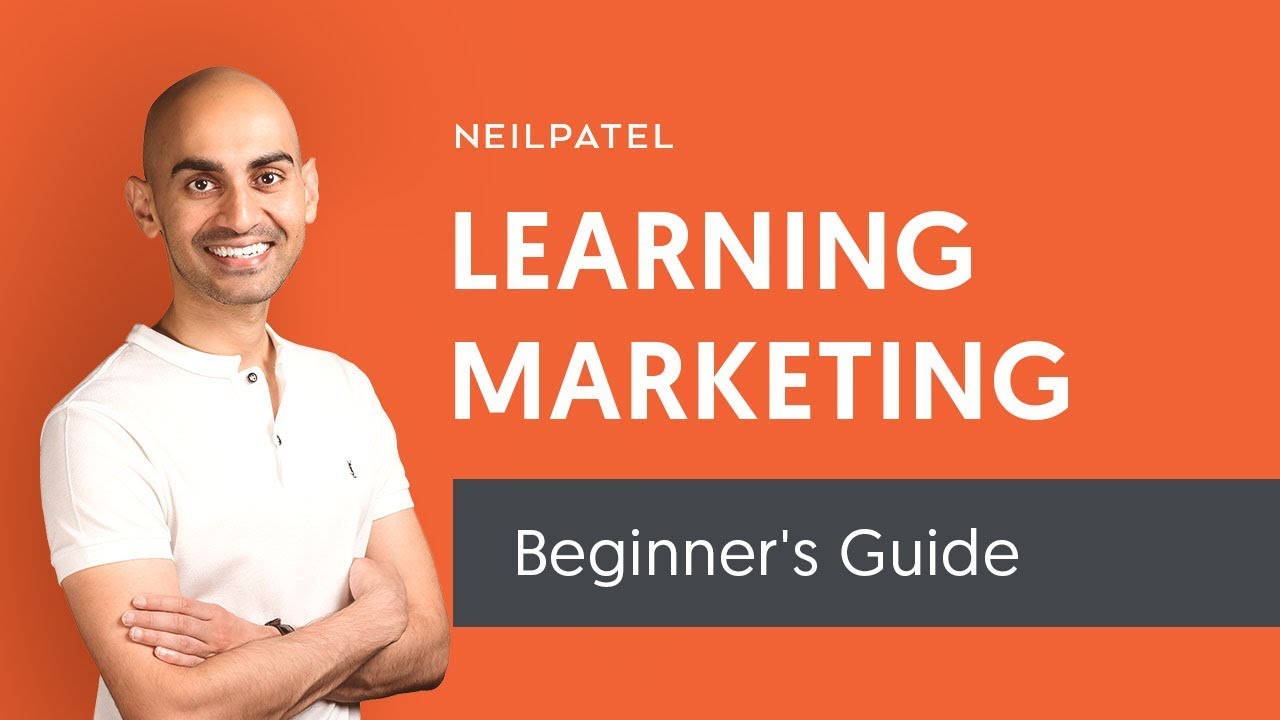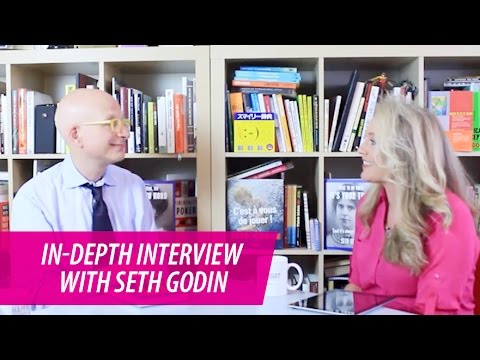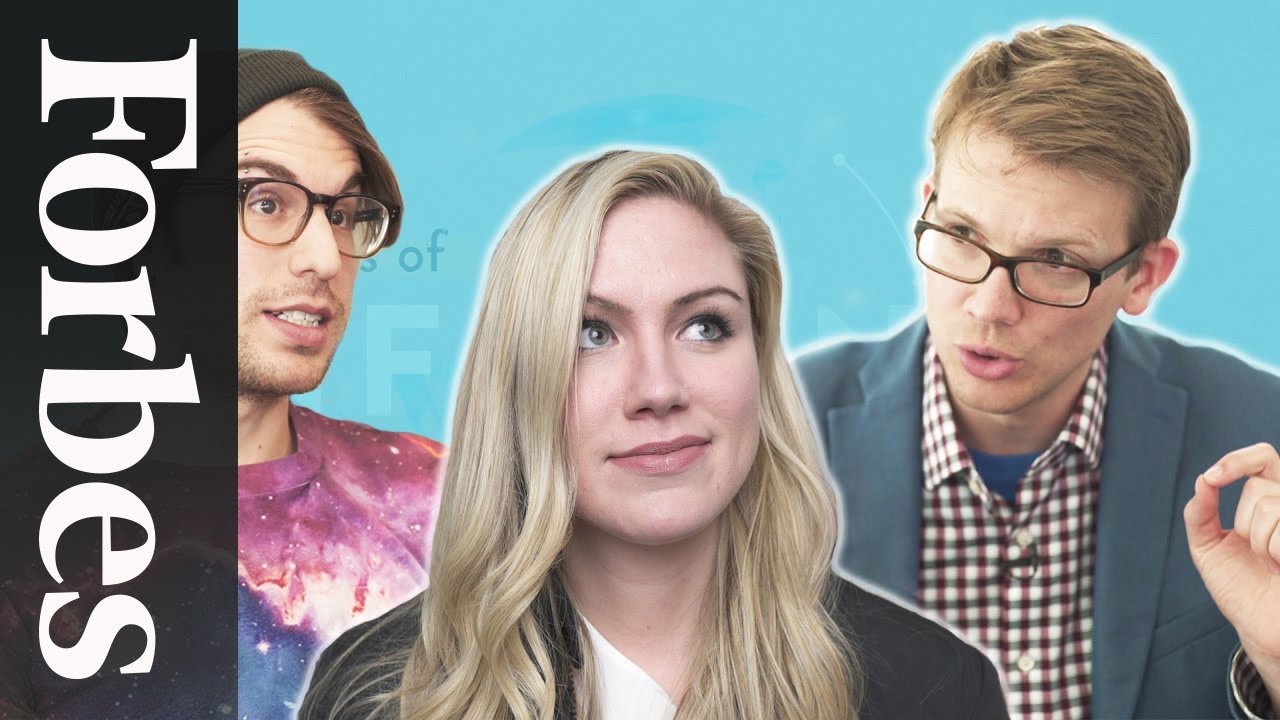The rise of prosumers is the latest challenge for marketers
On this page:
- Definition of the prosumer
- The reasons consumers turn into prosumers
- Prosumers – an opportunity for marketers
- How could marketers facilitate prosumption
- 4 steps marketers should take to make the most of prosumption
- Conclusion
As a marketer, it’s your job to know everything there is to know about the people consuming the products for which you are creating marketing campaigns, brand activations and advertising.
They are the consumers.
But who are the prosumers?
Prosumers – definition
Prosumers are the people who produce some of the goods and services entering their own consumption.
The prosumer is not a new concept. In his book, ‘The Third Wave’, futurist and businessman Alvin Toffler predicted the decline of consumers and the rise of prosumers, people who produce many of their own goods and services.
Next year will mark forty years since Toffler published his book in 1980 which means enough time will have passed allowing us to see if his prediction was correct.
Marketing guru Philip Kotler recognized the importance of prosumers for brands and marketers and in 1986 he published an essay in Advances in Consumer Research Volume 13 – ‘The Prosumer Movement: a new challenge for marketers’. In his essay, Kottler builds upon Toffler’s concept of prosumers from a marketing perspective.
Two reasons for consumers becoming prosumers
Instead of purchasing products and services from the market, prosumers can be found making their own clothes, cooking their own food, rearing their own cars and hanging their own wallpaper, says Kotler.
Why do people become prosumers?
Why would they rather produce their own soap than buy one of the many choices the market has to offer?
Kotler identified two reasons: better quality and self-actualization.
Prosumption activities for better quality products/services
Mass production is the manufacture of large quantities of standardized products often using assembly lines or automation technology.
To produce the products, manufacturers are always looking for ways to drive costs down sometimes at the expense of their workers, environment and overall quality of the product.
A lot more care goes into a product prosumers build or produce themselves, from the quality of the materials used to the finishing look. These prosumers care about what goes into the food they eat, the clothes they wear or the detergents they use to wash their children’s clothes.
Hollywood actress and mother of three, Jennifer Garner became increasingly concerned with the quality of food she was feeding her babies.
She began making her own organic, cold-pressed baby food blends. Her blends are free from preservatives, colours, concentrates or added sugars. Just like the food she used to eat when she was a little girl, living on her parents’ farm.
Her company, Once Upon a Farm is a member of the Organic Trade Association and a Certified B Corporation which means the company meets the highest standards of overall social and environmental performance, transparency and accountability.
Read more: 3 successful businesses founded by Hollywood stars
People would favour “make” decisions over “buy” decisions.
Philip Kotler, The Prosumer Movement: a new challenge for marketers
Prosumption activities to achieve self-actualization
Self-actualization means the full realization of one’s creative, intellectual, or social potential.
The concept has been popularized by Maslow in his hierarchy of needs pyramid where self-actualization is the ultimate life goal. Maslow defined self-actualization as follows: “What a man can be, he must be.”
How is prosumption tied to self-actualization?
To answer this question, we must first know what self-actualization is for each person.
Is it becoming a painter? Or taking care of children? Empowering people of all ages to change their lives by acquiring a new set of skills?
Whatever it is, self-actualization is different for everyone.

Agricool co-founders Guillaume and Gonzague / agriculture.gov.fr
French startup Agricool has reinvented the way strawberries are grown and potentially agriculture as an industry.
Co-founders Guillaume and Gonzague came up with the cooltainer, where fruits and vegetables grow vertically.
The cooltainer doesn’t harm the environment, is cost-effective and 100% sustainable. Agricool also created the cooltivator, a new kind of urban farmer. The cooltivator uses the cooltainer to grow their own greens, essentially having a garden in their apartment.
Prosumers – an opportunity for marketers
In his book, Alvin Toffler said prosumerism will usher in the end of marketing.
Philip Kotler has a more positive perspective. Although the increase in prosumption activities means fewer customers for mass-produced goods and services and less consumer interest in brands, he believes marketers should view prosumerism as a challenge and an opportunity for creativity.
Kotler says as follows: “Instead of marketers fighting prosumers, they should look for opportunities to facilitate prosumption activities.”
How could marketers facilitate prosumption:
1. Create better tools. Create better tools for prosumers to use, including better electric power tools for carpentry work, better tools for farming small plots of land, and so on. Agricool is a great example of empowering urban farmers to grow their own food.
2. Simplify the product on the process. “Painting by number” kits allow “Sunday painters” to produce better-looking paintings. “Adhesive wallpaper” allows more people to hang their own wallpaper.
3. Create how-to content. People looking to produce products need to acquire new skills. Think of ways to help them achieve their goals. It could be by providing them with the opportunity to attend evening classes. Or publishing how-to-do content in various formats: text, video or audio.
4 steps marketers should take to make the most of prosumption according to Philip Kotler
- Identify the most popular prosumer activities;
- Think through appropriate product and service responses;
- Direct your promotion appeals to themes stressing individuation, skill-building, and productiveness;
- Develop more specialized messages to reach these highly segmented target markets.
Conclusion
Alvin Toffler’s prediction of the rising prosumers was correct.
Philip Kotler’s prediction of marketers creating messages for highly segmented customers was correct.
He was also accurate when thirty-four years ago he envisioned the increase of how-to content. Today how-to videos are in top four content categories watched by YouTube users next to comedy, music and entertainment/culture.
Creating highly personalized messages is one of Facebook’s recommendations to advertisers looking to increase ad conversions. Being relevant to your customer’s needs is the secret to advertising success.
Relevancy is the word for email marketing also. Email provider MailChimp found that segmented email campaigns perform better than non-segmented campaigns.
One more marketing insight Kotler was right about: people searching for “others with kindred interests, finding them and communicating with them through electronic media”. In the late nineties, people joined discussion forums. When our lives came under the influence of social media, people created Facebook Groups to share information, support and help each other achieve their dreams.
As Philip Kotler says in his essay, prosumers should be looked at as another market segment.
The marketer’s role is to creatively support prosumers achieve their goals.
The aim of marketers should not be to protect the exchange system. The purpose of exchange networks is to facilitate the pursuit of human satisfaction. If the market system is overextended, and if people want to meet more of their own needs, on what grounds should marketers object? The market, after all, is a human invention and it will last as long as it serves human needs.
Philip Kotler
Join the Conversation
We’d love to hear what you have to say.
Get in touch with us on our LinkedIn Group, Facebook Group or Twitter.
Yam Regev (Zest) – Supporting self-learning marketers worldwide
Yam Regev is the co-founder of Zest, a knowledge-building platform for self-learning marketers worldwide. The platform is based on content sharing from its users.
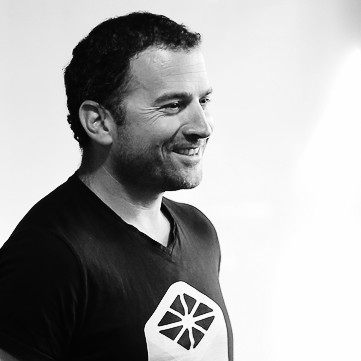
Yam Regev, co-founder @Zest.is / linkedin.com
What sets Zest apart from other knowledge-based platforms is that the suggested links are going through a multi-step content moderation process which ensures only the best content is approved.
I have only three Chrome tabs on my laptop and Zest is one of them. I discovered Zest shortly after its release in 2017 and I’ve been using it ever since. I love it! It’s my ace in the sleeve and my go-to resource for the best articles on everything marketing, SEO, branding etc.
Although very busy, Yam was kind enough to answer my questions on Zest and his entrepreneurial journey.
Enjoy!
1. Zest released a new-tab Chrome extension and now you are also releasing a knowledge-building mobile app. There are currently over 20.000 weekly active members operating around the world. How did Zest start and what is the story behind it?
Zest started as a solution to a problem that I experienced as a self-learner.
I wanted to continually improve my skills to advance my marketing career but I couldn’t spend my time taking long classes learning things that would be out of date by the time the course was completed.
I’m also dyslexic, so traditional coursework really doesn’t work well for me. I liked reading blogs and other content produced by members of my industry and I didn’t want to spend my days looking for relevant content amid all the low-quality fluff.
What I needed was a place where I could find knowledge-building content that I knew would be high-quality. I wanted the kind of content your professional peers share with you via email or through Slack–the good stuff.
But, of course, having to rely on a small circle of professional peers to deliver the content I needed to keep growing as a marketer wasn’t ideal. That’s how the idea of Zest was born. What if it wasn’t just my circle of peers, but a great community of marketing professionals from around the world who were sharing and recommending knowledge-building content: A tribe of self-learners.
That’s what Zest is. It’s a community–a tribe–of marketers who are dedicated to continually improving as professionals and are willing to share the great content they discover to help others improve too.
How did this idea become a reality? I was fortunate to have a good friend, Idan Yalovich who shared my vision. Idan is an amazing coder and one of the best tech & R&D pros in Israel. He and I co-founded Zest together and he brings the AI magic to Zest’s content discovery process.
When we first released the open alpha version of Zest we didn’t see immediate phenomenal growth. In fact, during the first few weeks, we were a little worried. But we persevered. Zest and the method of delivering content via a new-tab extension on Chrome were new.
It took our users a little time to adapt. But once they did, they continued to use the extension and told their friends about it. Product-market fit + network effects for the win! We continued to nurture that core community of users through personal outreach and by actively listening to their feedback.
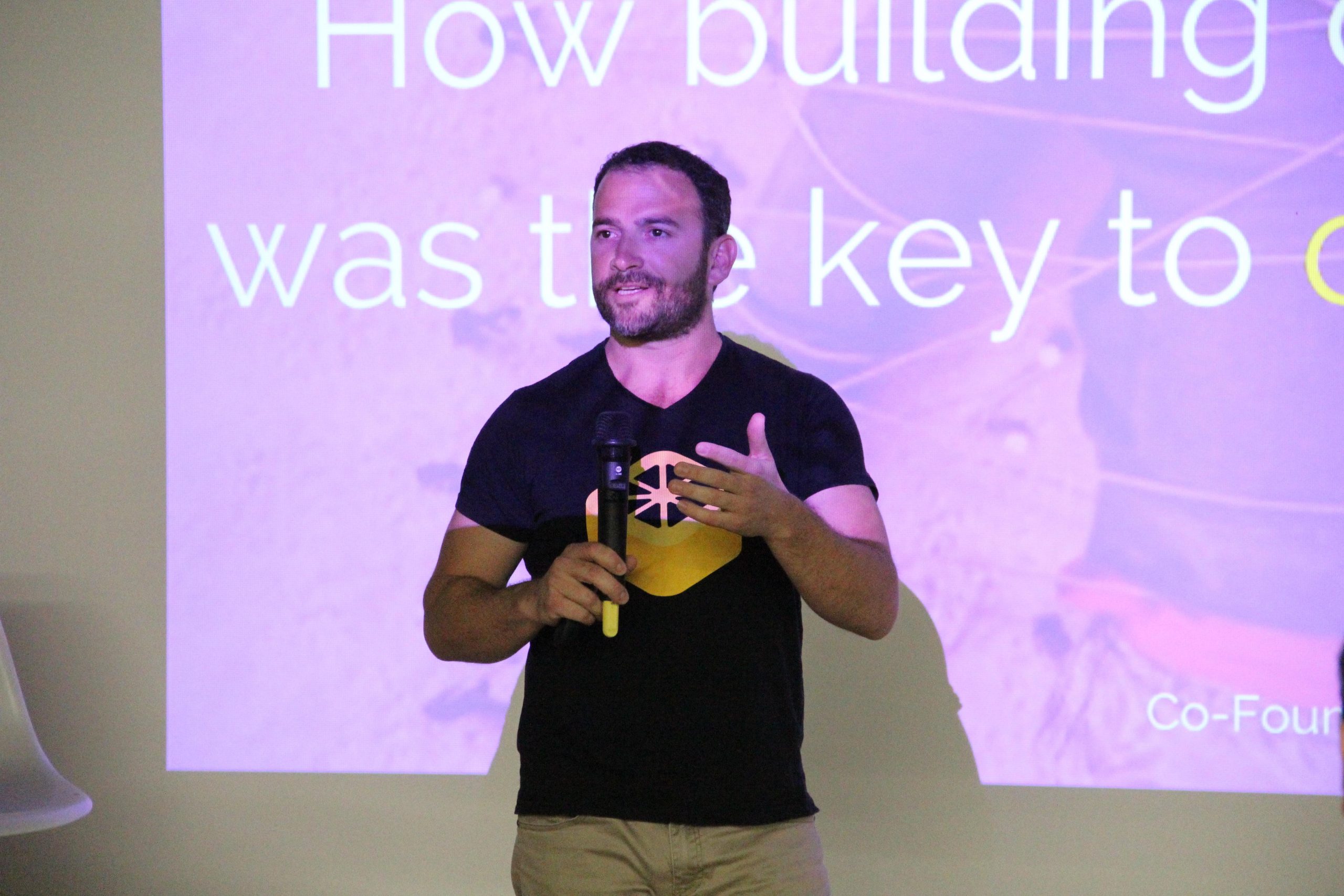
2. There are many challenges innovative startups like Zest must face. Name 3 challenges that you and your team confronted with and how you managed to overcome them.
Achieving a product-market fit is one of the first hurdles any startup must overcome. Because of our industry knowledge and discussions we had with other marketing professionals, we were relatively confident that our product will solve a problem that many of our users shared.
But, we still had a few stumbles along the way. For example, our first attempt at a newsletter performed well in terms of KPIs. People opened it, but it didn’t do what our brand promised. It didn’t add value to their personal learning journey. So, after several months, we cancelled our newsletter.
That’s not the end of the story, though. Earlier this year, we released the Zest UpSkill newsletter. This version of our newsletter was carefully tailored with product-market fit in mind. It provides each member with a personalized knowledge-building experience in the form of a weekly email. Every email includes links to content that are custom selected for the recipient. When a member of the Zest tribe opens their UpSkill, they can expect to find actionable content relevant to their marketing career.
Of course, another challenge nearly every startup will face is funding. To raise funds for Zest, we chose a slightly unusual route. In keeping with our commitment to transparency, we created an investors dashboard and invited people to have a look at our KPIs and other key information. As a result, our pre-seed funding round was able to attract investors who shared our vision.
Despite acquiring this funding, Zest is a bootstrapped startup. We have to continually balance our growth objectives with the demands of our lean structure. One of my roles is to keep a close eye on our monthly burn rate. This requires me to consider the long-term ramifications of each spending decision in addition to choosing how best to achieve our short-term goals.
Finally, founding a company doesn’t always mean that you can immediately leave your old life behind. Idan and I, like many founders, began Zest while still working full-time. But, dividing your focus when working on your startup can be fatal.
After working on Zest part-time from 2016 to 2017, I decided to make the leap to concentrating on Zest full time in late 2017. Idan took the plunge as well.
When you commit 100% to your company it sends a message to your team, your investors, and yourself:
This isn’t a dream or an idea, it is a business and we are in it to succeed.
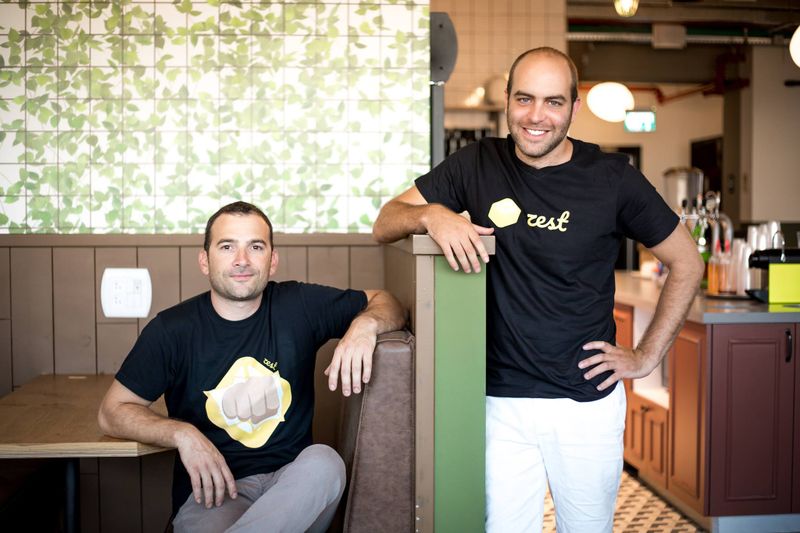
Yam Regev and Idan Yalovich, co-founders at Zest / canva.com
3. Every startup founder is looking for the best strategies to grow and scale their business. What strategies did you implement to grow and scale Zest?
One of the most important things an early startup can do is to focus intently on achieving product-market fit. The faster you can achieve product-market fit the more likely it is that your startup will survive.
I have two pieces of advice for young founders.
My advice for founders is to do things that don’t scale.
For us, that meant not using automation to reach our customers when we first launched Zest. Instead, we got close to them.
Communicate with your customers and potential customers one-on-one, ask for their feedback and gather a deep understanding of their pain points and the language they use to describe their needs. This is how you create a customer-focused product that captures the hearts and minds of your users.
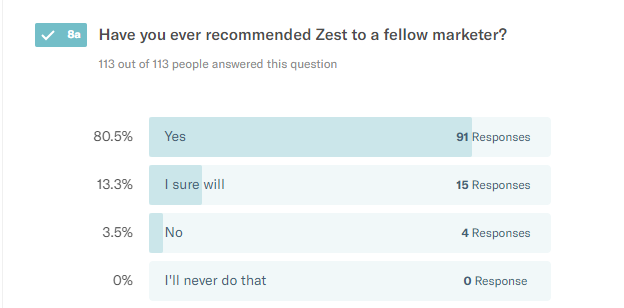
linkedin.com
4. What is the secret ingredient behind Zest’s success?
Without a doubt, the secret ingredient to Zest’s success is the Zest tribe (our users). I am a huge proponent of network effects and the power of community. Zest has managed to achieve its growth because of the strength of our community and their willingness to share their professional knowledge and expertise with their peers.
Paired with the strength of our community is the Zesteam’s determination to always add value. Our newest product, Zest Enlight doubles down on that commitment.
Zest Enlight is a pro version of Zest for mobile. Zest Enlight puts our users in control of their career development. After choosing their preferences, Zest Enlight users will be able to receive custom-selected, knowledge-building content about the marketing topics they choose and on the schedule they select. It takes self-learning and professional development to the next level.
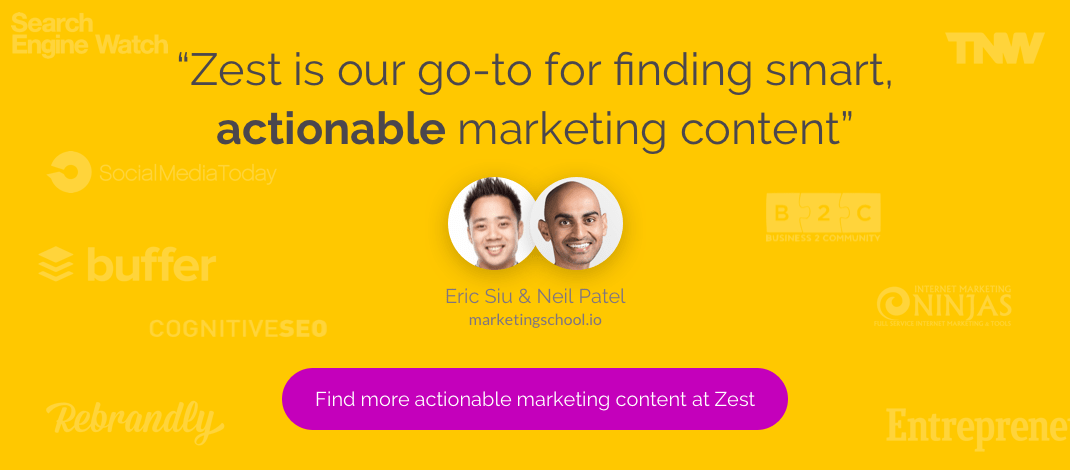
5. What is your advice for the aspiring or new startup founders?
My advice to aspiring startup founders anywhere is to keep learning, strive for continual improvement. Once you have perfected your vision and assembled your team, don’t rest. Continue to upskill, adding new areas of knowledge and expertise to your personal bank of resources. Surround yourself with others who are willing and eager to do the same.
When you bring your idea to investors, be prepared to answer their questions. Do your homework so that you are prepared to answer their questions. And don’t overlook the importance of aligning yourself with advisors, investors and team members whose attitudes and ideals match your company’s culture. It isn’t necessary for everyone involved with your startup to always agree. In fact, a healthy amount of disagreement will help you grow. But, everyone involved with your startup should share the same fundamental beliefs about what you are doing and how you’ll get there.
I also highly recommend that aspiring and new founders take advantage of every opportunity to learn from their peers. Either through face to face meetings or video calls, seek out other founders who have travelled the paths you are headed down and ask for their advice. Other founders understand your passion and the challenges of your journey and there are many who would love to meet with you to share their knowledge.
Join the Conversation
We’d love to hear what you have to say.
Get in touch with us on Facebook Group and Twitter.
10 Marketing Blogs Every Successful Marketer Should Follow (2 of 2)
Apart from books, marketing blogs are the next best thing for every successful marketer eager to learn: marketing experts and trendsetters write down their ideas and insights in easy to read articles.
Read recommendations 1 through 5 in the first part of this article: 10 Marketing Experts Every Successful Marketer Should Follow (1 of 2).
Let’s continue with our blogs recommendations 6 through 10!
6. Mari Smith – Mari’s Blog

Mari Smith / linkedin.com
Mari Smith has been working in internet marketing since 1999. She is one of the world’s leading social media thought leaders, often referred to as the Queen of Facebook for her Facebook marketing expertise.
She ranked at #4 in Forbes “Top Social Media Power Influencer” and was designated by Facebook Small Business and Facebook Marketing Expert. She is a founding contributor to Social Media Examiner, one of the world’s largest business blogs.
She is a keynote speaker and the author of The New Relationship Marketing and coauthor of Facebook Marketing: An Hour A Day. The book outlines a step-by-step plan for building a sizable, loyal network comprised of quality relationships that garner leads, publicity, sales, and more.
Mari’s blog is called ….Mari’s Blog (easy to remember :)).
On her blog, Mari writes about everything social: how to optimize your social media conversion strategy, Facebook video marketing, why newsletters are the future of online media, how to write Instagram posts to boost your business etc.
Service is the new social. Exemplary customer service will never go out of style.
Mari Smith
7. Mark Schaefer – {Grow}

Mark Schaefer / linkedin.com
Mark Schaefer is a speaker, consultant, educator and marketer with extensive experience. He is also an inspired writer on topics related to marketing. His latest book Marketing Rebellion: The Most Human Company Wins has just been published earlier this year (learn more about Mark and his book).
Mark’s blog is called {Grow} and, as the name has it, it features articles on marketing, technology and humanity to help businesses grow. On his blog, Mark writes about marketing strategy, influence marketing, big data and analytics, branding, corporate communications etc.
The most important characteristic of content marketing today is not quality or quantity. It’s insight. And that is the differentiator lacking almost everywhere.
Mark Schaefer
8. Tara Hunt – Truly Inc

Tara Hunt / linkedin.com
Tara Hunt is an executive-level digital marketing professional with over 20 years of progressive experience. She specializes in relationship and inbound marketing with a passion for data-driven strategy.
Tara and her team are on a mission to change the relationship between brands and their customers. They believe there is a better way to market your brand than through yelling and hand-waving.
Before Truly Inc, there was (and still is) Truly Social, Tara’s YouTube channel where she delivers insightful (and fun to watch) videos on everything marketing.
On her company’s blog, Tara writes articles on hot topics like influencers, engagement, content etc. What makes her articles stand out from the rest of the content available on the world wide web is her ability to provide a unique and insightful perspective. Here are a few titles: Content is worthless, Why branded content doesn’t work, Buying Facebook Ads is not a strategy etc.
Content, engagement and influencers are worthless but only when they are seen as promotional tools used to fast-track results.
Tara Hunt
9. Jon Loomer – jonloomer.com

Jon Loomer / linkedin.com
Jon Loomer is widely known for his Facebook advertising expertise. He is a Facebook Marketing Strategist and Metrics Master.
Social Media Examiner recognized his website, jonloomer.com as one of Top 10 Social Media Blogs of 2013, 2014 and 2015. His website is the most complete online resource of advanced Facebook marketing tips and tutorials, updated on nearly a daily basis.
Although he sees himself as an “accidental marketer”, there are no accidents when it comes to his career in Facebook marketing and advertising. His strength lies in his love of numbers, statistics and strategy which are all required traits for a marketer looking to manage successful Facebook advertising campaigns.
Jon started his website in 2011 and the number of articles he has written insofar will soon reach 1000 by the end of March 2019. That’s a lot of knowledge!
If you are looking for valuable insights and expert tutorials on Facebook advertising, Jon Loomer is the best marketer to turn to.
10. Aaron Orendorff – iConiContent

Aaron Orendorff / linkedin.com
As a marketer, you need to be able to write content, ideally – great content. Fortunately, writing effective and results-focused content is a skill you can learn.
Aaron Orendorff is a copywriter, Editor in Chief of Shopify Plus, one of the fastest growing e-commerce companies in the world and founder of iConiContent.
His mission is to save the world from bad content. Aaron’s articles on iConiContent are packed full of recommendations, insights and examples on how to write great content which adds value to your customers’ lives.
Here are a few examples: Failed Copywriting Pitch – 5 Lessons, 3 Audience-Enticing Headline Hacks: Power, Novelty & Pull, How to engage and captivate your audience…when they don’t want to listen.
Every piece of content you create has to do two things: (1) rescue its audience from their own personal hell and (2) deliver them unto their own personal heaven. Great copywriting is about salvation … not sales. If you’re not in the business of actually helping people, stop here.
Aaron Orendorff
Join the Conversation
We’d love to hear what you have to say.
Get in touch with us on Facebook Group and Twitter.
3 Marketing Books To Help You Become a Better Marketer in 2019
Do you want to become a better marketer in 2019?
Here are the latest 3 marketing books that you should read to improve your marketing skills:
1. Marketing Rebellion: The Most Human Company Wins by Mark Schaefer
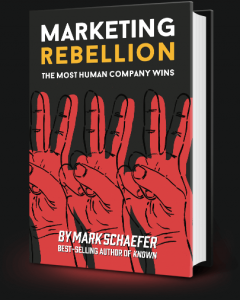
businessesgrow.com
Mark Schaefer is a speaker, consultant, educator and marketer with extensive experience. He is the co-host of The Marketing Companion, one of the top 10 marketing podcasts on iTunes.
In 2017 Mr Schaefer was the seventh-most mentioned person by CMO’s on Twitter and is among the Top 10 most re-tweeted marketing authorities in the world. He was listed as one of the Top 10 authorities on Social Selling by Forbes.
Mr Schaefer is the author of six best-selling books which have been translated into 12 languages and can be found in more than 700 libraries worldwide.
His latest book is called Marketing Rebellion: The Most Human Company Wins and it was published earlier this year.
In his book, Mr Schaefer talks about the way the technology-empowered customers are discovering, sharing and discussing your brand’s products without your brand taking part in the conversation.
“In fact, most of our marketing is occurring without us” because today “the customers are the marketing department”, says Mr Schaefer.
Based on thorough research, Marketing Rebellion presents a series of conclusions:
- two-thirds of our marketing … is not our marketing;
- we’re in a post-loyalty era;
- brands abuse and annoy their customers;
- lazy marketing will no longer work etc.
How are brands going to turn themselves into a conversations partner?
They cannot buy their way in; they have to earn it.
Mr Schaefer says brands should take a new business approach: appealing to constant human truth.
Marketing Rebellion is going to make a lot of marketers very uncomfortable.
Josh Elledge, UpMyInfluence
2. Talk Triggers: The Complete Guide to Creating Customers w/ Word of Mouth, by Jay Baer and Daniel Lemin
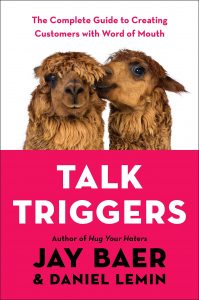
amazon.com
Jay Baer is the founder of Convince & Convert Consulting, a digital marketing and customer experience advisory firm that helps companies gain and keep more customers. During his 25-years of experience as a digital marketer, Jay has written six books.
Daniel Lemin is a start-up co-founder, trusted advisor and bestselling author on reputation management, digital marketing, and social media customer service.
Talk Triggers: The Complete Guide to Creating Customers w/ Word of Mouth is about how brands should create and use the word-of-mouth strategy to influence purchases.
The book contains:
- research on why and how customers talk;
- more than 30 detailed case studies;
- compelling stories;
- practical how-tos etc.
This book gives marketers the perfect recipe for triggering word-of-mouth marketing.
Word of mouth seems magical. Some companies just seem to be able to do it, and some don’t. Jay Baer and Daniel Lemin aren’t about magic. They’re about science. There’s an actual plan here. They call it the 4-5-6 method.
Joshua D. Bernoff
3. The BAMF Bible 2019 by Josh Fechter

bamf.media
Josh Fechter is an author and entrepreneur, the former head of growth for several venture-backed companies. He has also founded three companies among which BAMF MEDIA stands out not because it is the acronym for Badass Marketers and Founders, but because it is a multimillion-dollar agency.
Have you noticed longer posts appearing in your LinkedIn feed? Posts where people describe in short and emotionally packed sentences their experiences as start-up founders or first-time entrepreneurs?
Well, Josh Fechter takes the credit for them. His signature posts acquired massive reach and influenced LinkedIn to change their news feed algorithm for over 500 million people in 2018. The professional network acknowledged Josh’s work to be one of the two factors behind their algorithm change. Josh uses a formula for writing his engaging posts; he shared his formula in The Copywriting Bible.
Later last year, Josh put together The BAMF BIBLE 2019.
The book contains:
- 30+ pages of growth hacking strategy;
- the most cutting-edge marketing tactics almost all tested by Josh and his team.
It is available on producthunt.com and so far the book has been downloaded over 30,000 times with over 80,000 readers.
Join the Conversation
We’d love to hear what you have to say.
Get in touch with us on Facebook Group and Twitter.
10 Marketing Blogs Every Successful Marketer Should Follow (1 of 2)
A successful marketer is a marketer who never stops learning. Apart from books, marketing blogs are the next best thing: marketing experts and trendsetters write down their ideas and insights in easy to read articles.
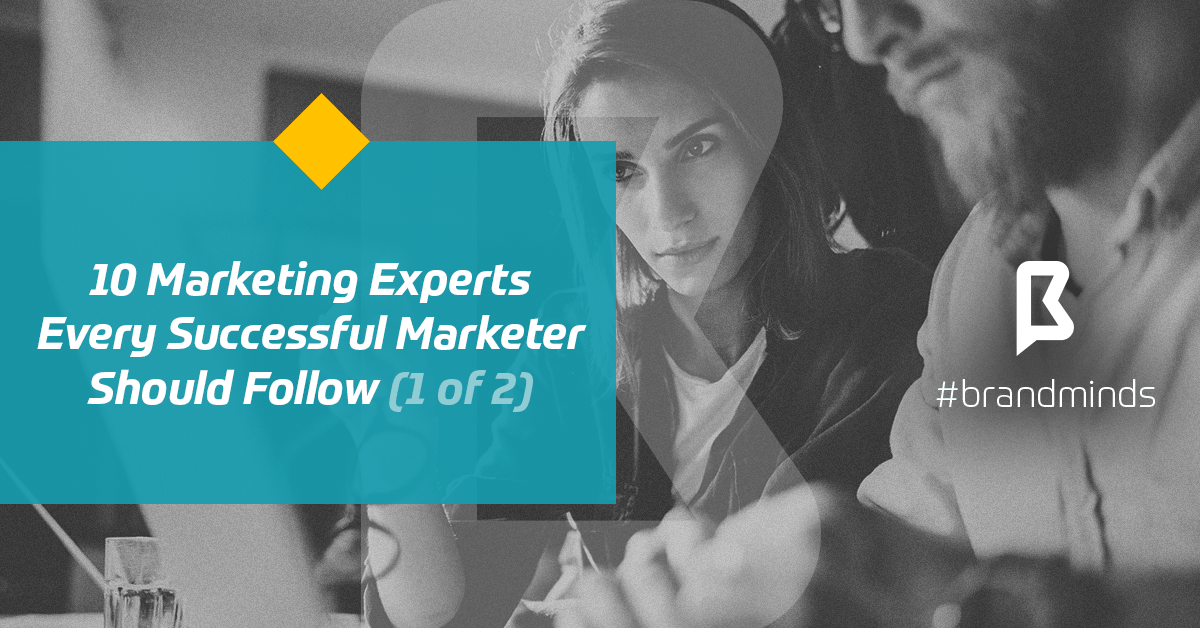
Here are 10 marketing blogs every successful marketer should follow:
1. Ann Handley’s Blog

Ann Handley / marketingprofs.com
Ann Handley is a writer, a speaker, a digital marketing pioneer and Wall Street Journal best-selling author.
She is the world’s first Chief Content Officer, heading up all professional education and training content at MarketingProfs. In her professional capacity, she leads companies internationally to rethink the way they market to achieve lasting business success.
She is also a LinkedIn Influencer.
On her blog, she writes about how businesses can escape marketing mediocrity to achieve tangible results: the link between empathy and marketing, why marketers and brands should take it slow, how marketers should challenge marketing assumptions etc.
Even when you are marketing to your entire audience or customer base, you are still simply speaking to a single human at any given time.
Ann Handley
2. Jay Baer’s Blog

Jay Baer / seoforgrowth.com
Jay Baer is the founder of Convince & Convert Consulting, a digital marketing and customer experience advisory firm that helps companies (like The United Nations, 3M, Oracle, Cisco, Nike, Hilton, Caterpillar) gain and keep more customers. During his 25-years of experience as a digital marketer, Jay has written six books.
In his latest book, Talk Triggers: The Complete Guide to Creating Customers w/ Word of Mouth, Jay talks about how brands should create and use the word-of-mouth strategy to influence purchases.
On his blog, Jay writes about innovative ways for marketers to get more customers and improve their experience, how to upgrade their content marketing, how to manage a social media crisis etc.
Branding is the art of aligning what you want people to think about your company with what people actually do think about your company. And vice-versa.
Jay Baer
3. Chris Brogan’ Blog

Chris Brogan / chrisbrogan.com
For the past ten years, Chris Brogan has been working with big companies like Google, Disney, Twitter and IBM to help them improve their content marketing and digital media efforts to acquire and/or retain customers (either B2B or B2C).
He is a speaker and co-author of Trust Agents: Using the Web to Build Influence, Improve Reputation, and Earn Trust (2009), a New York Times bestseller.
On his blog, he writes about subjects like how to be more effective with LinkedIn, what customers expect from brands, content marketing, how brands should make their customers feel smart etc.
The key is, no matter what story you tell, make your buyer the hero.
Chris Brogan
4. Rand Fishkin – Rand’s Blog

Rand Fishkin@Twitter
Rand Fishkin is the co-founder of Moz.org and Inbound.org.
In February 2018, Rand left Moz and began a new adventure: SparkToro, a technology platform in the influencer and audience intelligence marketing space.
Speaker and author of Lost and Founder, Rand shares on the company’s blog valuable insights on influencer marketing, the future of SEO, marketing fit etc.
Tell a story. Make it true. Make it compelling. And make it relevant.
Rand Fishkin
5. Andy Crestodina – Orbit Media Studios Blog

Andy Crestodina@Twitter
Andy Crestodina is the co-founder and Chief Marketing Officer of Orbit Media Studios.
He is a fervent advocate for content marketing and ethical digital marketing with 19 years of experience in the trenches.
He is a top-rated speaker and a marketing teacher.
In 2015, Andy was named one of Forbes Top 10 Online Marketing Experts to Watch and in 2016 Entrepreneur Magazine named him one of 2016’s Top 50 Marketing Influencers.
He is the author of Content Chemistry: The Illustrated Handbook for Content Marketing.
On the Orbit Media Blog, Andy shares his insights on how to improve email marketing engagement, e-commerce marketing tips, how to launch a social media advocacy program etc.
“Data-Driven Empathy.” That’s the idea I want people to understand. Marketing has always been about empathy, but digital marketing is about using data to make better decisions that align with our audience’s needs.
Andy Crestodina
Join the Conversation
We’d love to hear what you have to say.
Get in touch with us on Facebook Group and Twitter.
5 books every marketer should read in 2018
20 years ago marketing was done by getting your business listed in business directories such as Yellow Pages and printing flyers and catalogues of products and services.
In a short period of time, major leaps of technology forced marketers to change the way they were marketing products and services and adapt to the new era of Google-search ranking, social media accounts and chatbots.
Video marketing, inbound marketing, social media marketing, influencer marketing. Nowadays there are so many ways of doing marketing that some marketers may feel confused, frustrated or overwhelmed.
Here is our list of 5 books every marketer should read in 2018 to stay updated:
The 1-Page Marketing Plan: Get New Customers, Make More Money, and Stand Out from the Crowd
By Allan Dib
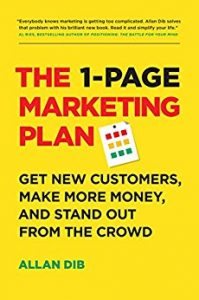
image source: amazon.com
Who is Allan Dib?
Allan Dib is a serial entrepreneur, rebellious marketer and technology expert. He has started, grown and successfully exited multiple businesses in various industries.
His last business was in the hyper-competitive telecommunications industry. It went from startup to four years later being named by Business Review Weekly (BRW) as one of Australia’s fastest growing companies – earning a spot in the BRW Fast 100 list.
Allan is passionate about helping businesses find new and innovative ways to leverage technology and marketing to facilitate rapid business growth. As a highly sought after business coach, consultant and public speaker, he frequently shares his proven strategies and cutting edge tactics with people all over the world.
What you will learn
- How to get new customers, clients or patients and how to make more profit from existing ones;
- Why “big business” style marketing could kill your business and strategies that actually work for small and medium-sized businesses;
- How to close sales without being pushy, needy or obnoxious while turning the tables and offering value to your prospects;
- A simple step-by-step process for creating your own personalised marketing plan that is literally one page;
- How to overcome competitors and make yourself the only logical choice;
- How to get amazing results on a small budget using the secrets of direct response marketing.
Readers’ reviews on Amazon
684 customer reviews
5 stars – 91%
My MBA marketing courses didn’t teach me as clear as this book did. I cannot recommend this book highly enough and have bought 5 copies for my employees. No more random acts of marketing for me…
Hurst
It was almost like the light bulbs were turning on in my brain as I read the pages and performed the exercises. Bam, bam, bam. At the end of the book I had a complete, robust, inexpensive and sustainable marketing plan for my business. In fact, my marketing plan is so complete that I’ve already started implementing it.
Don W.
I’ve been in the marketing business as a owner of a small ad agency for 40 years, on the client side as a marketing director and as professor of marketing teaching college. And I say you cannot find a more accurate marketing book to read. And I read at least 2 business books per week.
David Jewell
Beyond Influencer Marketing: Create Connections with Influential People to Build Authority, Grow Your List, and Boost Revenue
By Cloris Kylie
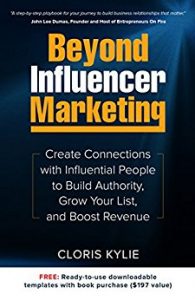
image source: amazon.com
Who is Cloris Kylie?
Cloris Kylie, Marketing MBA, helps you tap into connections with influencers to build authority, grow your list, and boost revenue.
A sought-after influencer marketing specialist and bestselling author of “Beyond Influencer Marketing”, Cloris has been featured on network television, on top-ranked podcasts and YouTube shows, including the #1 podcast for entrepreneurs, “Entrepreneur On Fire.” Cloris’s articles have been published on websites with millions of followers, such as Tiny Buddha, MindBodyGreen, and Addicted2Success.
Cloris has grown a large network of influencers who have played an essential role in the growth of her coaching and consulting business.
What you will learn
By reading this book, you’ll discover how to:
- Avoid common roadblocks to connect with influential people;
- Tap into your network of connections to land your ideal clients;
- Build and nurture long-lasting business relationships;
- Create a solid marketing foundation and become “influencer ready”;
- Assume a winning mindset that leads to measurable success.
Readers’ reviews on Amazon
58 customer reviews
5-star: 98%
This book is a great find, it has a ton of great content and is easy to read filled with engaging content, success stories and case studies from highly successful people. You can tell that this author really knows the subject, this is much more than just a brief overview of the topic, it is a guidebook from an expert.
Sean Sumner
This book is loaded with so much information to help any company, entrepreneur or author by giving concrete steps that can help expand their reach, grow their brand, increase their recognition, increase their email list, which in turn, could grow their income.
Stokes
DO NOT underestimate this book. I have been an entrepreneur for over 20 years and I honestly thought I fully understood what ‘influencer’ marketing was. After reading this book I realized what I knew was just the tip of the iceberg. This is an incredibly well thought out and detailed description of how anyone who is a coach or consultant of any kind can use ‘influencers’ to grow their business exponentially. I was impressed. You will be learning from someone who has “been there, done that”. I will put many of these ideas into practice immediately. This is a great investment and is highly recommended.
Ronald L. Schaffer
Storynomics: Story-Driven Marketing in the Post-Advertising World
By Robert McKee and Tom Gerace
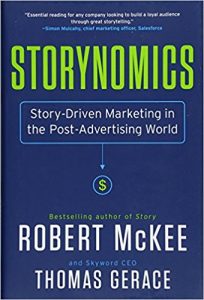
image source: amazon.com
Who is Robert McKee? Who is Tom Gerace?
Robert McKee is the legendary story master whose popular writing workshops have earned him an international reputation.
Tom Gerace is a digital marketing expert and CEO of Skyword.
Together they guided big companies such as Samsung, Marriott and IBM to transform their marketing from an ad-centric to story-centric approach.
What you will learn
Based on the worldwide seminar offered by Robert McKee and Tom Gerace — Storynomics translates the lessons of storytelling in business into economic and leadership success.
In Storynomics, the authors map a path for brands seeking to navigate the rapid decline of interrupt advertising, bringing their knowledge to business leaders and entrepreneurs alike.
Drawing from dozens of story-driven strategies and case studies taken from leading B2B and B2C brands, Storynomics demonstrates how original storytelling delivers results that surpass traditional advertising.
How will brands and their customers connect in the future?
Storynomics provides the answer.
Readers’ reviews on Amazon
19 customer reviews
5 stars: 95%
In Storynomics, Gerace and McKee provide the framework and process to make us all great storytellers. They set the stage for the future of marketing and teach the reader how to chart their own course. Their writing style is engaging and inspiring. Similar books I’ve read conveyed lofty goals and stories of others success but with no way to achieving those goals within your own organisation. It’s clear to the reader both writers have the expertise and proven experience putting these methods to work.
Brian
Before diving into the craft of compelling storytelling, the authors address my inner skeptic by time-traveling to establish how we got here, proving (in multiple ways) the sheer cognitive power of story, and describing what – exactly – a story is NOT. Next comes the good stuff. McKee & Gerace walk us through the eight vital stages of story design. We learn why every element is crucial, what each one can do for an audience, and how to supercharge the individual stages for maximum emotional connection.
Joel Johnson
Highly recommend. I found the book’s approach to a quickly changing world of marketing and advertising enlightening and motivating. The book delves deeply into the mechanics of what makes a compelling story and explores the challenges facing brands as consumers became savvier about avoiding traditional ads. The book features real-world examples of companies that harnessed the power of storytelling to build brand loyalty. I also like the helpful metrics as well as suggestions and guidelines for introducing a storytelling mindset into your business, whether it be a one-person shop (like mine) or a large corporation.
Ann T.
10x Marketing Formula: Your Blueprint for Creating ‘Competition-Free Content’ That Stands Out and Gets Results
By Garrett Moon
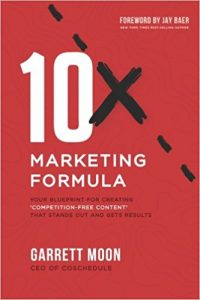
image source: amazon.com
Who is Garrett Moon?
Garrett Moon is the CEO and Co-Founder at CoSchedule, the web’s most popular marketing calendar. Ranked as the best business tool built by a startup on Entrepreneur.com, CoSchedule helps more than 10,000 marketing teams stay organised in 100+ countries around the world. In 2016, CoSchedule was named one of the top five startups in Tech. Co’s Startup of the Year Competition.
As a thought leader, Garrett has been blogging and speaking about content marketing, social media marketing, and startup business for more than seven years. He’s been featured on sites like Entrepreneur, Forbes, Social Media Examiner, and Content Marketing Institute.
What you will learn
You will learn to overcome a lack of time, struggling to produce content, an inability to engage your audience, and so many more marketing roadblocks.
If you think marketing success belongs only to elite geniuses or those with huge budgets, think again—10x marketers achieve 10x growth regardless of their limitations. This book is about finding the strategic shortcuts to get you to results fast. It’s about short-circuiting the path to jaw-dropping growth. You have to find your own way—and The 10x Marketing Formula is that path.
So, if you’re ready to look like a marketing genius and revolutionise your results (and mindset), you’ve just found your path.
Readers’ reviews on Amazon
17 customer reviews
5-star: 82%
The crux of the book is that you need to start producing content that brings 10x rewards, not 10% rewards. They provide you with a good definition of what that is but they don’t leave you hanging with a definition. There is a fairly straight forward strategy that the book provides you with so that you can start producing great content.
Curtismchale
Until I read this book, growth for my business felt unattainable because of the struggle to stay above the noise. After reading this book, I understand what measurable growth looks like, and I’m seeing real growth in my business. Rather than spending countless hours on social platforms just trying to get clients to notice me, I’m creating more valuable marketing that’s seeing much higher return. I’m spending my time with my family making memories, instead of wasting away in front of a screen.
Haley F.
I don’t have a lot of extra time for reading, but I MADE time for this book! 10x Marketing Formula provides immense clarity in a niche that’s cluttered with a million “shoulds” and empty promises. It’s thick with actionable advice. Most of the time, I could only get through a few pages at once, because I wouldn’t get far before I’d be inspired to do something right that minute! This is no pie-in-the-sky fluff piece. Garrett makes no illusion of the fact that this is hard, disciplined work. But it’s work with PURPOSE. Following Garrett’s 10x principles has revolutionized the way my team works. It’s helped us focus our priorities and we are on our way to 10x results.
Jill Maldonado
Digital Marketers Sound Off: Tips, Tactics, Tools, and Predictions from 101 Digital Marketing Specialists
By Matt Chiera
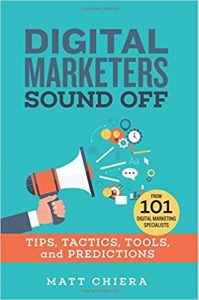
image source: amazon.com
Who is Matt Chiera?
Matt Chiera is Founder of Ice Nine Online, a Chicago-based digital agency by day and market research lab by night. Matt is also Digital Director for enterprise advertising agency The Well and former Head of Business Development for award-winning search marketing agency Perfect Search Media. Matt has been managing and executing digital marketing projects for over a decade.
Matt put Digital Marketers Sound Off together because he couldn’t find a resource like it for himself. There are plenty of books out there that share only one person’s insights about digital marketing. Digital Marketers Sound Off is a book where you’ll find 101 digital marketing specialists sharing their favorite tools, tips, tactics, and predictions for the future.
What you will learn
- What tools top digital marketers use on a daily basis;
- The single most effective tactic used by digital marketing specialists;
- How digital marketers determine success and failure in their campaigns;
- Tips that will improve your digital marketing immediately;
- The biggest mistakes made by digital marketers and how you can avoid them;
- Predictions for the future of digital marketing and how you can stay ahead of the curve;
- Digital marketing insights spanning many specialisations: Search Engine Optimisation, Google AdWords, Facebook Ads, PR, Email Marketing, Content Marketing, Social Media Marketing, and Affiliate Marketing.
Readers’ reviews on Amazon
14 reviews
5 stars: 100%
I was a digital marketing noob before I picked up this book. Now I feel like I could actually get a job doing Social Media Marketing, SEO, Facebook Ads, or one of the other digital marketing specializations in the book. This book was like Digital Marketing 101 with info that I think I could actually use to be successful in the field.
Robert Jenkins
I found this book to be very useful for social media marketing, email marketing and a few other tidbits around getting more people to know you exist. I would love to see new editions with additional contributors, more topics (Instagram specifically…) but this is a fantastic start to laying plans or improving a digital marketing landscape.
Joe Arko
Being in the marketing space myself, I’m always looking for new information and fresh ideas. Wow, does this book hit the ball out of the PARK! Every chapter had me scribbling notes of new ways to grow business. I highly recommend this book to marketers and want-to-be marketers alike. Awesome stuff Matt!
Stevie B.
Top 10 Mistakes Marketers Make When Hiring Agencies
-
- Not choosing the right time to outsource. Timing is essential,just like every other business decision one makes. It has to be chosen carefully and with a lot of attention. When confronted with the idea of outsourcing a service or some competencies, the company’s representative must take in account first if its the right time to make that certain decision at that time,for the company, and, at the same time, what concluded to that decision.
2. Spending too much time deciding if to make the move or not. While it is very important to make sure the timing is right spending too much time going back and forth on the decision wouldn’t do you any good. You must be decisive and confident on your choices.
3. Outsourcing the wrong activity / activities. If you hire someone outside of the office, you should give them the things they can do best. Always choose the best specialists or companies you can afford. Creating a company brand and marketing goals should be done inside your office, so make sure you discuss your culture code, style and requirements with the outsourced marketing partners before kicking off the project.
4. Having unrealistic ROI expectations. When you entrust the marketing or communication activities of your company, you should set some realistic expectations. One of the biggest mistakes of many companies is that they think outsourcing all their problems will solve them at once and there will be no need for them to participate in marketing decisions, activities and so on. Do not forget that brand awareness, a firm customer base and long-term faithful relationship with customers take time. Results don’t appear over night,it takes a lot of effort both at an external,but also internal level to reach your goals.
5. Forgetting that PR doesn’t sell per se. When looking for a PR partner outside your company make sure you first of all understand that PR doesn’t equal immediate sales. And no professional PR specialist will promise you that. That being said, a successful PR strategy will definitely affect your sales success indirectly through 3 factors: brand awareness & recall, credibility, as a secret marketing weapon.
6. Not doing the right research before the pitch. One of the most important steps is doing your research about the agencies you are interested in. A simple Google /Linkedin / Facebook search will not help you in taking the best decision of which agencies to call on the pitch or for a presentation. Instead try looking at their portfolio, at the case studies, at the awards the won, the services they provide, etc. Talk to their current clients. Read their reviews and their blog. See if the media was interested in them or not. Does their language vibe with you? Do their clients remind you of your company? Do they have documented results similar to the ones you want?

7. Asking more than 5 agencies in the pitch /presentation. If you know what you want from your agency, and you should, you don’t need more than 5 agencies briefed. You save both their time and yours and you are closer to choosing the right partner for your business. A good research will help you make the right choices.
8. Falling for shiny presentations. Make sure the very creative and crazy ideas presented to you, as beautiful and as interesting as they may sound or look like, are backed up by facts. The company or specialist you are hiring must be able to create and implement what presented to you. And most of all, bring results.
9. Letting the price be the main criteria. Choosing the most expensive agency doesn’t guarantee you the best results, but basing your decision firstly on the amount of money you pay for the collaboration will prove to be a bad call. Cheap will be cheap no matter how you look around it.
10. Not listening to your gut feeling. After years and years of experience, the instinct is very good and calibrated. We believe is very important to always have it with you and use it,when necessary.
The importance of cross-media in 2018
A typical customer journey usually involves many stages from discovery to purchase, using many different touchpoints across multiple devices. Unless we analyse all of those data traces, we will not get a truly accurate single consumer view.
In 2018 the advertisers will start to question the role digital plays within the entire media ecosystem; media agencies, publisher and research partners will have to be ready to give an answer.” The Getting Media Right report shows that 77% of marketers would increase their investment if they could better measure cross-channel ROI. Marketers should focus on cross-media measurement to understand their ROI. A collaborative effort between brand, agency, publisher and research partners is required to develop and improve solutions to understand cross-channel effects. It’s up to industry players to answer the $100 million dilemma: how could that money be invested better – and not cut – so that it achieves the desired impact?,” said Pablo Gomez, Media & Digital Director
Kantar Millward Brown.The cross media marketing involves the usage of different media forms to integrate your marketing message into the minds of people. Instead of selling the product exclusively on the website, cross-marketers use a combination of mobile applications, paid search results, ad links, TV commercials, YouTube videos, content marketing, printed brochures, radio and television ads, social media and other tools.
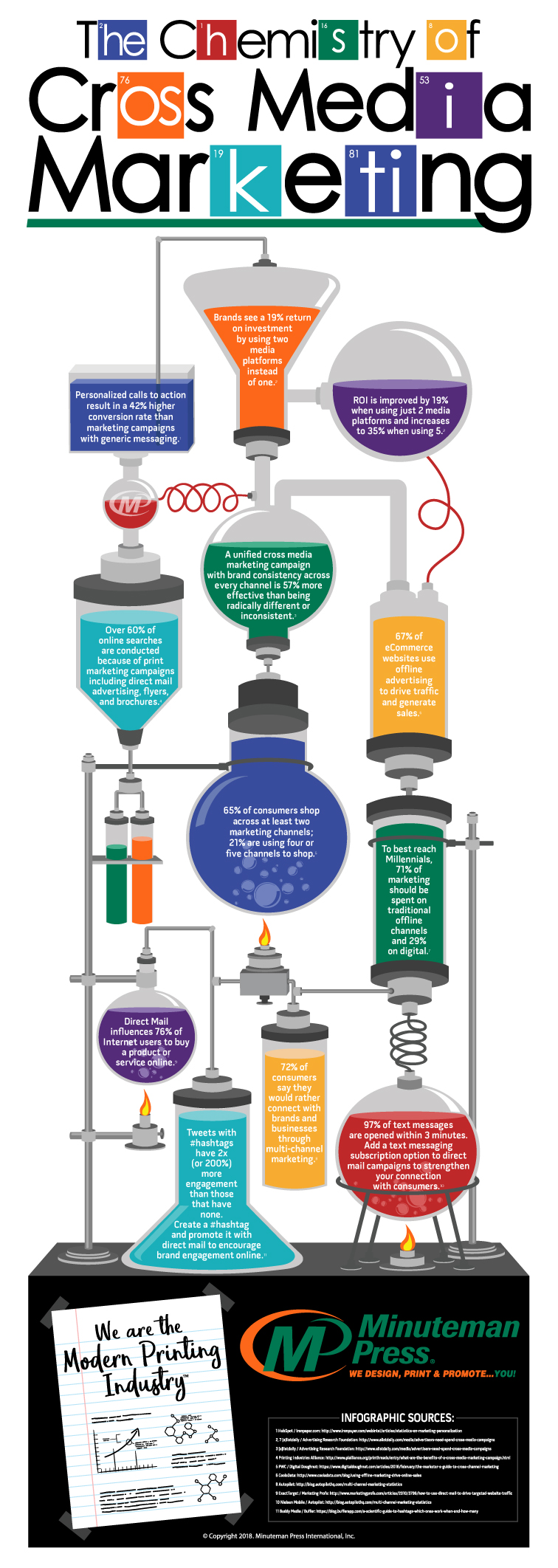
“The cross-media marketing campaigns or joint advertising, is similar to a network of friends and acquaintances that you have on different social platforms. Such advertising expands the audience that can see your business. By the principle of mutual assistance, large, medium and small firms operate. As equal, and different in status, organizations conclude partnership agreements. For example, a popular and successful company can take under its wing a newly emerged small firm. In this case, the claimed brand performs the function of the locomotive. Is such a partnership profitable? It all depends on the terms of the contract,” wrote jgdb.com.
According to wikipedia, real-time personalization (RTP) is an innovative way to looking at cross media marketing. RTP has the ability to see who visits each webpage. “In addition, if companies have the ability to see a website viewed by a potential customer, then the company can quickly personalize what the customer is looking and make appeals to a certain product. After a real time personalization search, a business plan is created to fit each potential customer. When a potential buyer is looking at a company’s advertisement, a popup add usually appears. Every product that a customer accepts, five to seven linked advertisement pages popup. RTP captures these acceptance rates, locate advertising company, and supplies the information necessary for the next step in the business plan.”
What can a client gain from a cross media marketing campaign:
- Puts the basis of long-term relationships.
- Double use for consumers, which leads to their active response.
- Being able to reach consumers at different times of the day and also at different points of the purchasing cycle.
- Joint campaigning contributes to a significant reduction in advertising costs and it has a double effect compared to the campaigns that are conducted by each company separately.
- “As customers engage with a brand on a more regular basis, the chances of them becoming and ultimately staying loyal to that brand also increases. This is largely due to the consistency in messaging – one of the main features of cross-channel marketing,” wrote econsultancy.com.
- The results are visible straight away.
- Allows him /her to expand the marketing services used.
US best cities for marketers in 2018
Marketing will always be an incredible field to work on, offering you plenty of times to show your strategic and creative side and, at the same time, offering the chance to be part of a brand’s growth and diversification. We thought you might want to take a look at the US most vibrant cities when it comes to marketing job opportunities.
As Forbes latest list is the following: 1. New York City, NY; 2. Los Angeles, CA; 3. San Francisco, CA; 4. Chicago, IL; 5. Washington, DC; 6. Boston, MA; 7. Seattle, WA; 8. San Jose, CA; 9. Philadelphia, PA; 10. Atlanta, GA, we’ve decided to take a closer look to some of them and not only.
New York City, NY
New York City is the largest regional urban economy, so its number of marketing jobs and opportunities shouldn’t surprise anyone. New York is home to Avon, Estee Lauder, and many other fashion and cosmetics brands looking for talented marketers, more than 17.000 jobs being available. New York carries the highest volume of marketing positions, making it a great place to start and work up the ladder. Media, cosmetics, fashion, clothing, and service giants are all hiring and there are currently.
Oakland, CA
“With a population of about 420,000, Oakland ranks first on our list, offering more than 9,400 full-time marketing jobs at some of the most competitive salaries in the country: over 2,000 employees earn over $110,000 per year, and the average marketing manager salary is $105,249. Still, positions are spread evenly across the spectrum, and several thousand entry-level and mid-tier opportunities are available, as well. Major corporations are in the area – including Kaiser Permanente, Clorox, Dreyer’s, and Cost Plus World Markets – and recently more tech companies are moving into Oakland from the other side of the bay,”wrote Best Marketing Degrees.
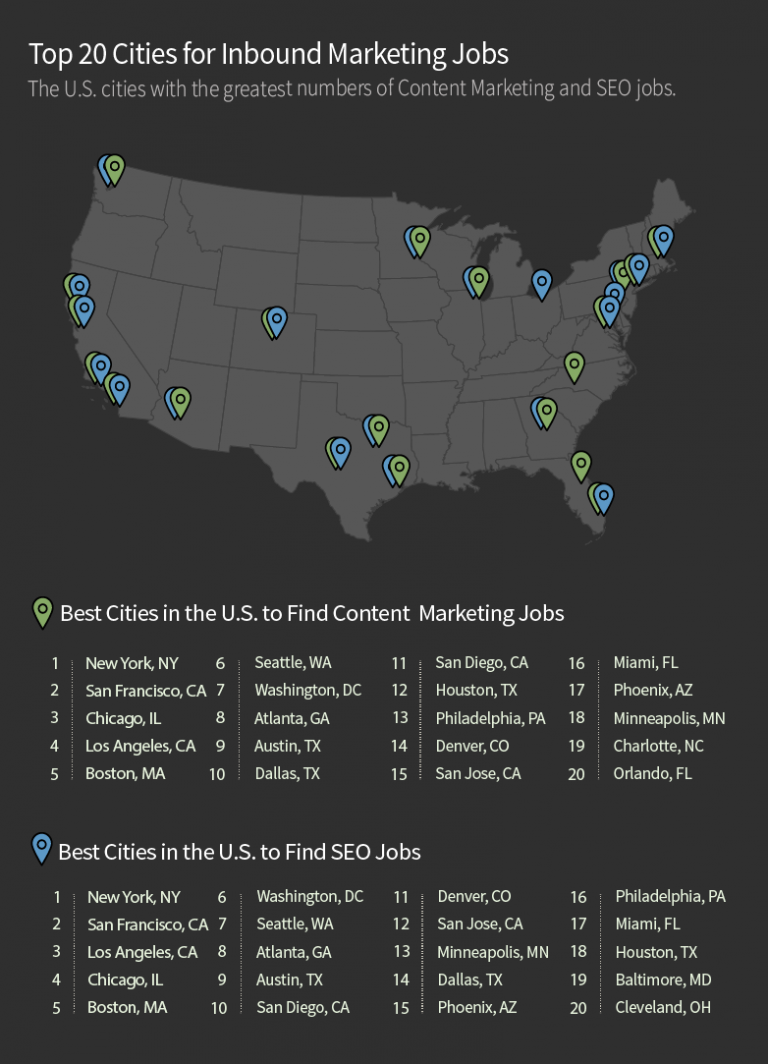
source: Conductor.com
San Francisco, CA
If you prefer to stay on the west coast, San Francisco marketing workers are among the highest paid in the country, as said by BestMarketingDegrees.org: 20% make six-figures; 65% are among the top two-fifths of earners; and marketing managers earn a $110,000 salary on average. Still, there’s room for entry-level and mid-tier positions, too. The situation is influenced also by the fact that some of the largest and most visible companies in the world have headquarters in the city: Salesforce, Dropbox, Airbnb, Wells Fargo, McKesson, Twitter, Del Monte Foods, Charles Schwab, and more, across a wide range of industries.
San Jose, CA
On the other hand, unlike many of the other US American cities present in the top, San Jose is another option in California, with around 5500 marketing job listings. There are positions for entry-level candidates and experienced managers alike,with the marketing managers’ average pay at $110,430. Taking in account its strategic position in the Bay Area, there are also a lot of famous brand looking to hire: Facebook, Apple, Google, Super Micro Computer, Cisco, Oracle, Intel, Intuit, Yahoo!, NVIDIA, Stanford University, etc.
Chicago, IL
Chicago is a great place for working professionals who are looking for a career in marketing. In the city there are more than 9,000 marketing positions, with the average salary for a marketing manager is just under $100k. Companies in the area include: Epsilon, Deloitte, JPMorgan Chase, The Creative Group, Citi. Chicago is chock-full of opportunities in design, advertising, web development and digital marketing. This city is home to some of the most successful digital marketing agencies in the country including Rosetta, 3Q Digital and Ethology.
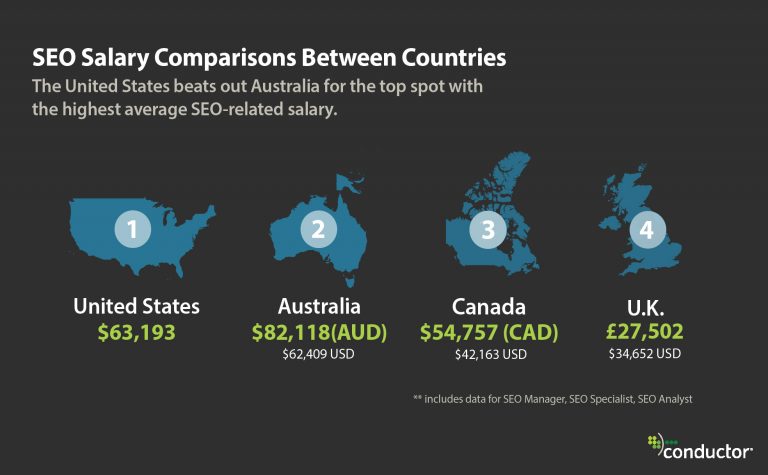
Washington, D.C.
Washington, D.C. was voted the number one spot for networking opportunities by Mashable.Networking is a huge part of digital marketing and sales, so it’s no surprise that D.C. is a hub for marketing jobs. With one-third of the cities population between the ages of 20 and 34, this represents the ideal audience for digital marketing efforts.
Los Angeles
According to CareerCast, after New York, Los Angeles employs the most marketing managers nationwide and is expected to benefit from healthy growth in the next decade. The California Employment Development Department estimates that the city will gain nearly 2,300 new marketing managers by 2020 – that 16% growth outpaces the industry’s national growth estimate of 14%, per the BLS (U.S. Bureau of Labor Statistics).
Atlanta
Atlanta is one of the fastest growing U.S. cities for marketing professionals. Atlanta’s advertising industry employs 1.99 people per 1,000 jobs in the city, and pays a competitive $121,070 annual mean salary, reports the BLS.
Learning: a never-ending job for marketers
The marcomm industry is one of the fastest changing industry in the world, highly connected to the technology revolution and consumers. In order to always be there for their clients (the consumers),understand them and offer them the best brands’ positioning,strategy and creative thinking, marketers must always be up-to-date with everything that represents a hot trend for their target, with the technology they use and how they position themselves towards them. The exponential rate of technological change impacting marketers means that they need to always be learning. To remain agile, individuals and organisations need to consider change a permanent factor. There is a strong and circular relationship between talent, training and performance.
According to Econsultancy, 14% of marketers indicate that the Head of Marketing
is responsible for the Learning & Development (L&D) of marketers, 67 % of marketers say they approach professional development on an ad-hoc basis, while 27 % of marketers say that their organisation has a well-considered strategy for learning and development. “Because marketing evolves so fast, CMOs should be responsible for managing the learning and development of their marketing colleagues. If the CMO is responsible for marketing performance, then she or he should ideally have control over the quality of marketing training,” wrote Econsultancy in its report.Moreover, developing a knowledge of how the brain works can make you a more effective marketer. Understanding consumer psychology for marketers can be like flipping the brain’s switch, casting light on methods and strategies that can help in the promotion, advertising, and revenue of your business, brand, products and services.
“Classical conditioning as a learning theory can be used by marketers to help craft an image for their product that will elicit the desired response from consumers. Marketers work to implement this learning behavior by helping to foster associations between a particular image, thought, or idea that consumers will grow to recognize and associate with their brand. Operant conditioning functions on the premise that people learn by reinforcement. The theory is based on the idea that when individuals are subjected to the consequences of their actions or decisions, they tend to learn to do it again (if positive) or cease (if negative). With operant conditioning, marketers create a reward-based system that consumers learn to recognize and want to repeat. For example, a buying system that awards points for future purchases when you spend $10 or more. By reaping a reward, consumers will be more likely to make a purchase and continue purchasing,” wrote study.com.
Xennials – a new generation to be targeted by marketers
Typically born between 1977 and 1983, the generation remembers a childhood of dial-up internet and brick-like mobile phones, but was young enough to embrace the first wave of social media in their twenties. Xennials grew up with technological advances, and tend to be more comfortable with them Generation X.
Xennials are considered less cynical and pessimistic than Gen X, variously defined as being born from the mid 1960s to early 1980s, but not as optimistic and even entitled as Gen Y, born from the early 1980s to late 1990s.
According to Inverse.com,while Xennials are fluent in modern digital culture, they aren’t chained to it and “have some ability, or at least a latent space in our brains, to unplug.” Economically, “Xennials have seen it all”. They are old enough to remember the end of a long period of growth (following a small recession) in the 1990s, but they came of age around the time that the “dot-com bubble” burst and saw the decline and major recession of the 2000s. In other words, they were “first given a sweet taste of the good life, and then kicked in the face.”
Still, if you are not sure if you are Xennial or not and want to make sure, The Guardian even has a quiz for you that you can find here.
According to Professor Woodman of the University of Melbourne, the psychological makeup of the typical Xennial should lie somewhere between the typical Millennial and the members of Gen X. “The idea is there’s this micro or in-between generation between the Gen X group – who we think of as the depressed flannelette-shirt-wearing, grunge-listening children that came after the Baby Boomers and the Millennials – who get described as optimistic, tech savvy and maybe a little bit too sure of themselves and too confident.”
On their turn, the writers at Hiring Monster consider that Xennials and Millennials love to feel a sense of pride in what they’re doing; they’re not driven by salary alone. They might eventually pursue their own projects and go freelance, but they feel accountable for their work and take ownership in it. “They don’t see their jobs as “punch in, punch out” or 9 to 5; they live and breathe their work.”
So how are you as marketers embracing them?
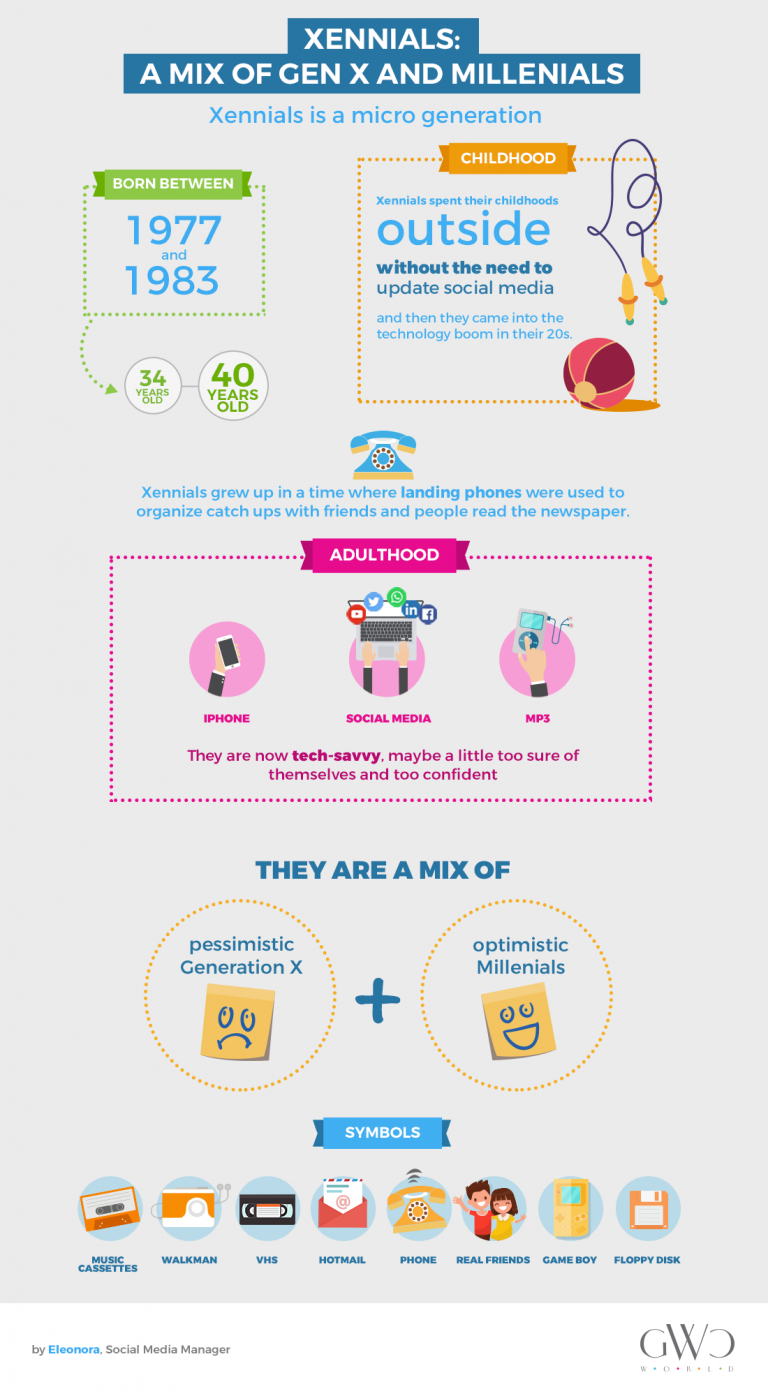
Big influencers attract thousands of dollars for just a post on social media
Only 3% of the marketers said they planned to cut back on influencer marketing in the coming year, versus about 75% who anticipated spending even more on it, says emarketer.com. Moreover, according to the website, companies are paying the most for celebrity posts, especially on certain platforms. On average, posts by celebrities with at least 1 million followers (considered as influencers) cost nearly £65,000 each ($87,731), with Facebook posts demanding a leading rate of approximately £75,000 ($101,228).
Influencer marketing costs are going up in the UK, according to research by Rakuten Marketing and Morar Consulting, but prices per post vary considerably depending on reach and platform. This month, polling of UK marketers working directly on influencer programs from sectors including fashion, beauty and travel, approximately two-thirds of respondents had seen the prices influencers charge for posts go up in the past 12 months. In some industries, the costs were even higher, with some premium fashion brands, for example, paying celebrity influencers more than £160,000 ($215,954) per post.
“UK marketers are willing to pay celebrity influencers on Facebook up to £75,000 for a single post mentioning the brand they want to promote, a new survey has revealed. They are also prepared to pay celebrity influencers £67,000 for each YouTube video that mentions their brand, while key influencers on Snapchat can expect to be paid as much as £53,000 per Snap,” writes www.warc.com.
Spending was much more modest for so-called micro-influencers—those with 10,000 or fewer followers, due to the fact that only a fifth (20%) of marketers claim they are able to demonstrate the impact of influencers through indirectly influenced sales. Prices averaged at close to £1,350 ($1,822) per post, with YouTube and Facebook commanding the highest prices—more than £1,500 ($2,025)—and Snapchat the lowest at just over £1,000 ($1,350).
“Decision makers questioned from across a variety of sectors including fashion, FMCG, beauty and travel admitted that they would shell out as much as £53,000 per Snapchat post, which despite coming in at significantly less than the value they placed on other platforms, is notable given that Snapchat’s ephemeral nature means videos and pictures disappear within 24 hours of being posted,” said Rebecca Stewart for thedrum.com.
Overall, respondents said they would devote an average of 24% of their marketing budgets to influencer marketing in the next 12 months. That figure’s higher than the share of budgets that the largest percentage of marketers in the UK and US said they devoted to influencer marketing in a March 2017 study by Econsultancy. In that study, between half and six in 10 luxury and non luxury brand marketers said they invested less than 10% of their overall marketing budgets to influencer marketing. But the second largest shares of respondents were similar in their spending allotment to those in the Rakuten and Morar study.
Affiliate marketing firm Rakuten Marketing spoke to 200 UK marketers working on influencer programmes and found that post-for-post they were prepared to pay 12% more for Facebook endorsements than they were for YouTube. The research also found that despite the value brands clearly place on high-profile influencer slots, the majority of those asked (86%) admit they aren’t entirely sure how influencer fees are calculated. Which is pretty odd, especially after the last years of change in the media buying market, the restriction of budgets and the overall risen caution.
Why are the influencers so important for marketers when it comes to social media? According to The Economist, social media offer brands their best opportunity to reach cord-cutting millennials: Snapchat, for instance, reaches 40% of all American 18- to 34-year-olds every day.
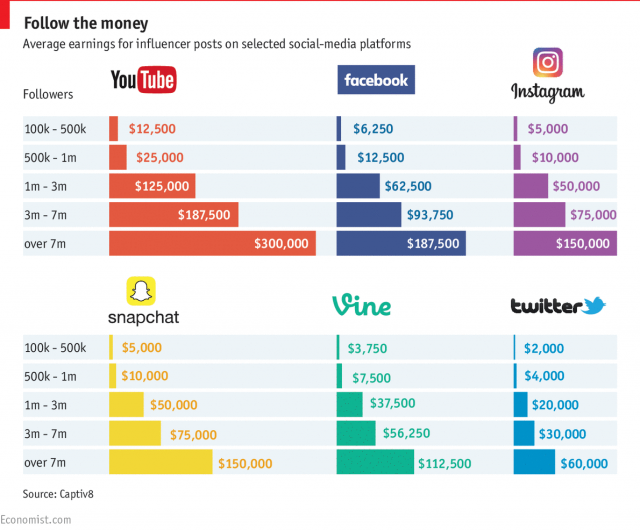
“Moreover, these platforms can make consumers feel they have gained unprecedented access to the lives of the rich and famous. That lets sponsors interact with their target audiences in ways that traditional advertising cannot match. In turn, demand from marketers for these channels has made social media lucrative territory for people with large online followings,” wrote the famous business magazine.
On the other hand, while 59 per cent of marketers state the influencers they work with will take guidance from them around best practice, 56 per cent of premium fashion marketers admit to a situation in which influencers hold all of the power. For example, only 20 per cent of marketers state influencers are prepared to follow their lead when it comes to guidance around billing.
Less than a third (29 per cent) believe that the influencers they work with are entirely concerned whether their content drives sales for the brand. Interestingly, when asked what would encourage marketers to invest more in an influencer programme, greater transparency and better reporting of influencer contribution to sales now rank as the highest factor (50 per cent).
James Collins, Rakuten Marketing’s SVP/managing director, global attribution, comments, “Influencer marketing can be hugely effective but marketers are commissioning expensive posts without understanding the real impact on the purchase journey. It’s essential that marketers question influencer fees and use attribution tools to measure the effect of this activity in order to create strong, value-driven relationships between brands and influencers.”
- Not choosing the right time to outsource. Timing is essential,just like every other business decision one makes. It has to be chosen carefully and with a lot of attention. When confronted with the idea of outsourcing a service or some competencies, the company’s representative must take in account first if its the right time to make that certain decision at that time,for the company, and, at the same time, what concluded to that decision.

